Marlow White's swords and sabers have ceremonial blades. As such, they are built to strict military regulations to be used in drills, ceremonies, and displays. These blades are of the highest quality but are not sharpened for use as a weapon.
How to Measure
Your uniform sizes may be different than your "normal" civilian clothes sizes. In order to get a proper uniform fit, you must often take new measurements and will sometimes need to increase your "normal" size by one. For example, it is very common for a Soldier to need trousers one size larger than the measured waist. This allows enough room in the seat, thighs and hips for the trousers to drape as they should. Your active PT regimen often times broadens your shoulders, back and chest to the point that you need a size or two larger coat than you are used to. Please allow us to help you determine the correct size for your uniform by carefully following the directions below or taking a look at our How To Measure Videos.
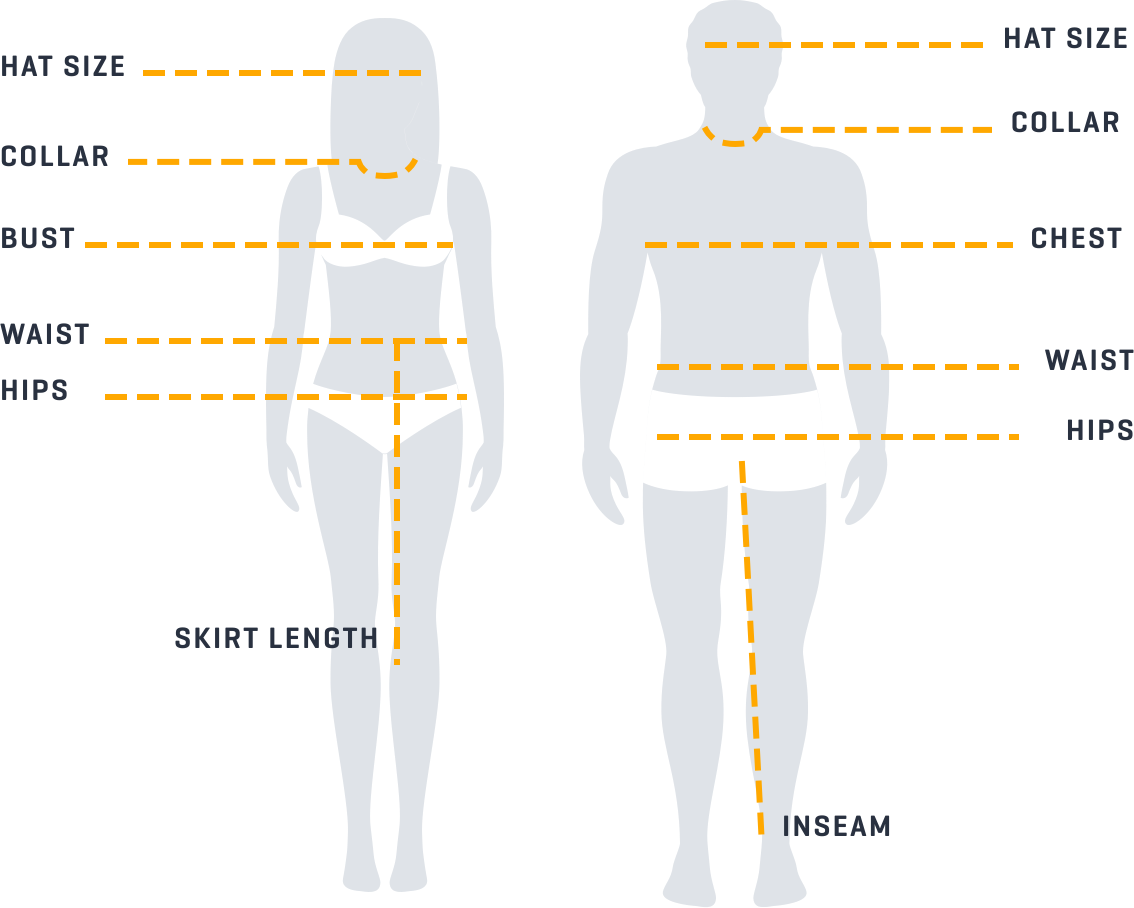
*Snug means that the tape is tight, yet loose enough to slide your hand under the tape.
Sizing Tables
Males
After getting your measurements, use the following table to help determine the size you will need for your coat and trousers. If you need help with determining the best sizes for you, please contact us.
| Height | Size |
| Less than 68" | S = Short |
| 68.5" - 73" | R = Regular |
| 73.5" - 76" | L = Long |
| More than 76.5" | XL = Extra Long |
Females
Your military uniform sizes may be significantly different than your "normal" civilian clothes sizes. Don't panic! The uniforms use the Department of Defense (DoD) sizing tables, not the tables that civilian clothing may follow. Use the tables below to help determine your uniform sizes and please contact us if you have any questions.
| Height | Size |
| Less than 63" | P = Petite |
| 63.5" - 67" | R = Regular |
| More than 67" | T = Tall |
| Size | Bust | Waist | Hip |
| 4 | 32.5" | 24.5" | 35" |
| 6 | 33.5" | 25.5" | 36" |
| 8 | 34.5" | 26.5" | 37" |
| 10 | 36" | 28" | 38.5" |
| 12 | 37.5" | 29.5" | 40" |
| 14 | 39" | 31" | 41.5" |
| 16 | 41" | 33" | 43.5" |
| 18 | 43" | 35" | 45.5" |
| 20 | 45" | 37" | 47.5" |
| 22 | 47" | 39" | 49" |
| 24 | 49" | 41" | 51.5" |
Head Measurements
Your service cap may not be the same size as your beret!
Ideally, try on a cap to best determine your size. In the absence of a try-on, follow these steps:
Step One
Use a tape measure to measure around your head:
-
across your brow (approx 1" above eye brows)
-
slightly above your ears
- keeping the tape parallel to the floor
- this measurement is a "two-person" event and is nearly impossible to accurately do by
yourself
For best results, use a plastic/cloth tape measure. Alternately, you may use a piece of string or cord and then measure the length of the cord.
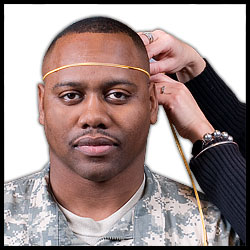
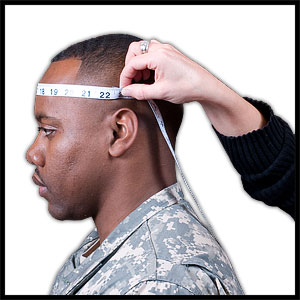
Step Two
For female sizes, your head measurement in inches will be your hat size. For male and generic sizes, divide the measurement in inches by 3.14 to obtain your cap size, rounding UP to the nearest 1/8".
Don't like math? Use our sizing chart!
Head – Inches |
Cap Size |
20 3/8" |
6 1/2 |
20 3/4" |
6 5/8 |
21 1/8" |
6 3/4 |
21 1/2" |
6 7/8 |
22" |
7 |
22 3/8" |
7 1/8 |
22 3/4" |
7 1/4 |
23 1/8" |
7 3/8 |
23 1/2" |
7 1/2 |
24" |
7 5/8 |
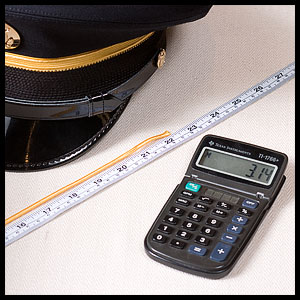
Step Three
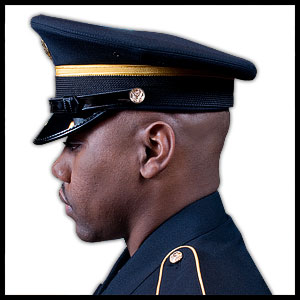
Consider the shape of your head. Service caps are preshaped to an average oval shape. If you have a more narrow or round head than "average", consider adjusting up to the next higher size.
Upon receipt, your service cap should fit snug, but not too tight. Notice that the cap is parallel to the ground and is approximately one inch above the eye brows and ears.
How can my Blue Service Cap and beret sizes be different?
The service caps have a constant and relatively more-rigid shape than a beret, in addition, the beret will stretch a little over time.
Cap Size
Your Blue Service Cap size may be different than your beret size! We have many Soldiers who order the wrong Cap size.
Collar
Measure around your neck at the point where the collar is worn, pulling the tape tight enough to remove gaps between the tape and the skin, but not so tight as to depress and discolor the skin. Round up to the next ½" for your collar size. Another technique is to measure the collar of a comfortably fitting shirt while laying it on a flat surface. Measure from the center of the button to the outside edge of the button hole and round up to the next 1/2'".
Chest/Bust
While standing erect, but relaxed, measure around the largest part of the chest or bust with the tape passing under the arms, remaining parallel to the floor, and snug *.
Waist
While standing relaxed, measure around your waist where the trousers are worn; generally this is the smallest part of the waist. Pull the tape snug*.
Hips
While standing relaxed with your feet together, measure around the fullest part of your hips (seat), keeping the tape parallel to the floor and snug*. Remove wallets and cell phones from your pockets prior to taking the measurement.
Skirt Length
Measure from your waistline to the center of your kneecap.
Inseam
Measure the inside seam from the crotch to the bottom of the trouser leg. A good technique is to measure a pair of well-fitting trousers while laying them on a flat surface.
Sleeve Outseam
With your arms held relaxed at your sides, measure from the center of the back, over the shoulder, and to the bottom of the wrist bone where the hand joins the wrist.